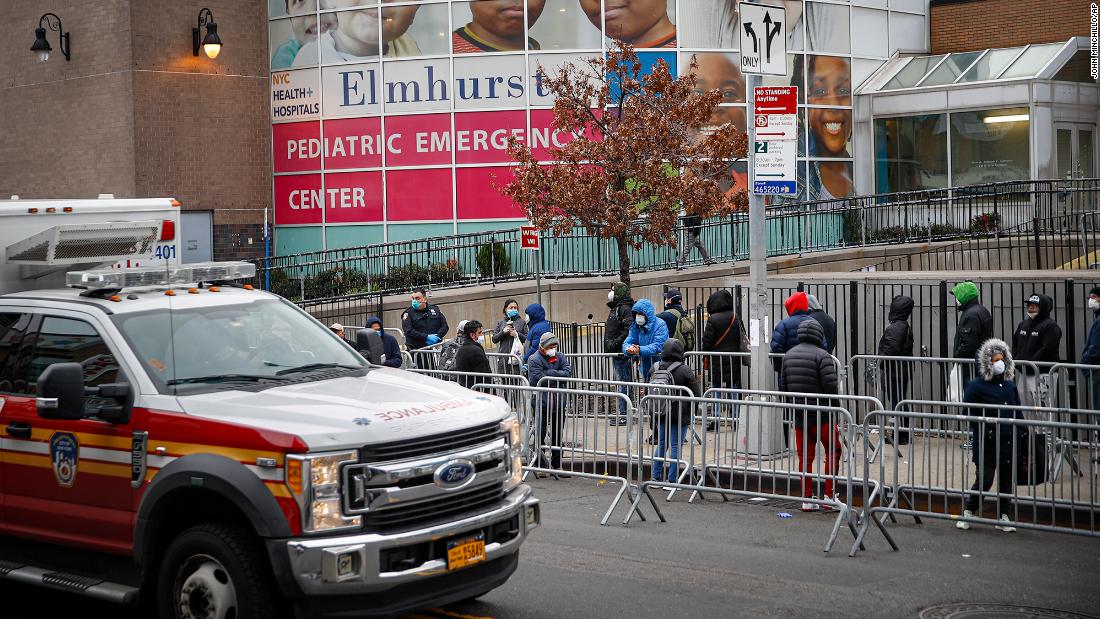[ad_1]
Health experts said the answers are largely specific to the New York metropolitan area — its density and population, primarily — but they are also a warning to other states that think they may be spared.
New York is the epicenter for now, but Covid-19 will not stop there.
High density and size
The first and most obvious explanation for the severity of the area’s outbreak is that New York is the largest and most densely populated city in the US, and coronavirus tends to spread in dense places.
“That spatial closeness makes us vulnerable,” New York Gov. Andrew Cuomo said Wednesday.
At all times of day, New Yorkers pack together on the subway, bump into each other on sidewalks and brush knees at bars and restaurants — all while potentially contagious. They live in crowded apartment buildings, squeezing up stairs or into elevators with neighbors. The transit system connects people across all five boroughs, so most people don’t own cars that might otherwise separate people.
“We’re used to crowds,” New York City Mayor Mayor Bill de Blasio said. “We’re used to lines. We’re used to being close together.”
With over 8 million people, New York City is also the largest city in the country. So New York’s high number of coronavirus cases is also just a reflection of its size. The state will likely lead the country in coronavirus cases even if its infection rate per person is not the highest, Sepkowitz said.
High testing rates
Another reason why New York has so many confirmed coronavirus cases is because it is looking for them.
Cuomo said over 100,000 people have been tested for coronavirus in New York. He said Thursday that about 25% of all testing nationwide has been performed by New York.
“We’re hunting positives,” Cuomo said. “We’re hunting positives so we can isolate them and reduce the spread.”
Widespread testing may make the numbers look bad, sure, but health officials say it’s vital to slowing the spread of the virus. The more you test, the more you can isolate those people who have the virus and thereby stop it spreading.
Still, testing is just a part of the explanation for the high totals, according to Dr. Arthur Caplan, a CNN medical analyst and the head of the Division of Medical Ethics at NYU’s School of Medicine.
“I think it is true that we have a worse outbreak here just by admissions to ICUs as they begin to build. It’s not just testing,” he said.
Slow early response
“We are going to very quickly put out guidance about having to reduce crowds and audiences while still having a certain amount of activity,” de Blasio said at the time.
Because the virus spreads exponentially, a delay of even a few days can lead to major differences.
“It’s important to isolate and distance early because it makes it harder for the virus to jump from person to person quickly,” Caplan said. “When it spreads slower then you have enough beds in the hospitals and ICUs and ventilators to handle the sick.”
Travel destination
“We have international travelers who were in China and who were in Italy and who were in Korea and who came here,” Cuomo said Wednesday. “And I have no doubt that the virus was here much earlier than we even know. And I have no doubt that the virus was here much earlier than it was in any other state. Because those people come here first.”
Still, those moves were too late to stop the virus from reaching New York because of its heavy travel, Caplan said.
New York’s heavy travel “sort of made the virus arrive here earlier,” he said. “It started here faster.”
First but not last
Given all those reasons, New York City was always bound to be a hub of rapidly spreading cases. But it is far from the last.
“We’re just early. We will see surges in other places,” Caplan said.
“It’s like a rock thrown into a pond and it ripples out,” he added. “It goes to cities, then suburbs, then rural areas due to population density.”
Cuomo has warned that New York is the “canary in the coal mine” for the country.
“It’s higher in New York because it started here first, because we have global travelers coming here first, because we have more density than most places, but you will see this in cities all across the country. And you will see this in suburban counties all across the country,” he said. “We are just a test case.”
[ad_2]
Source link




